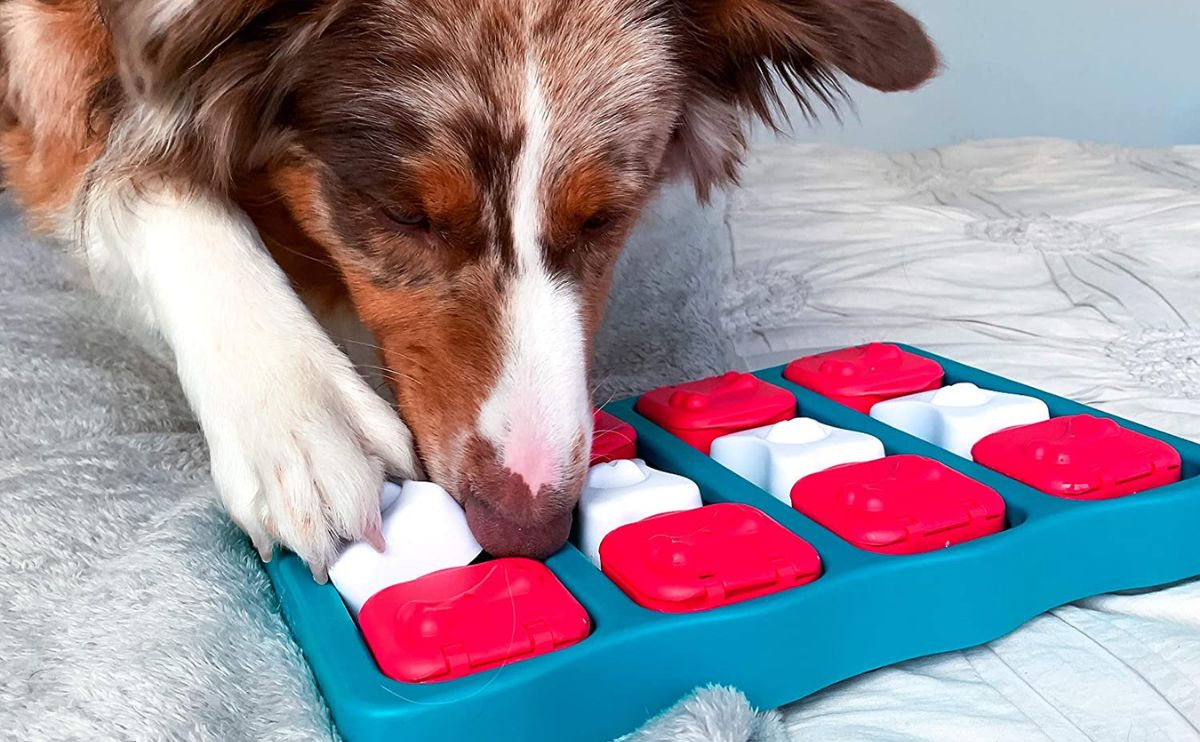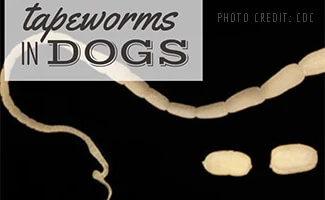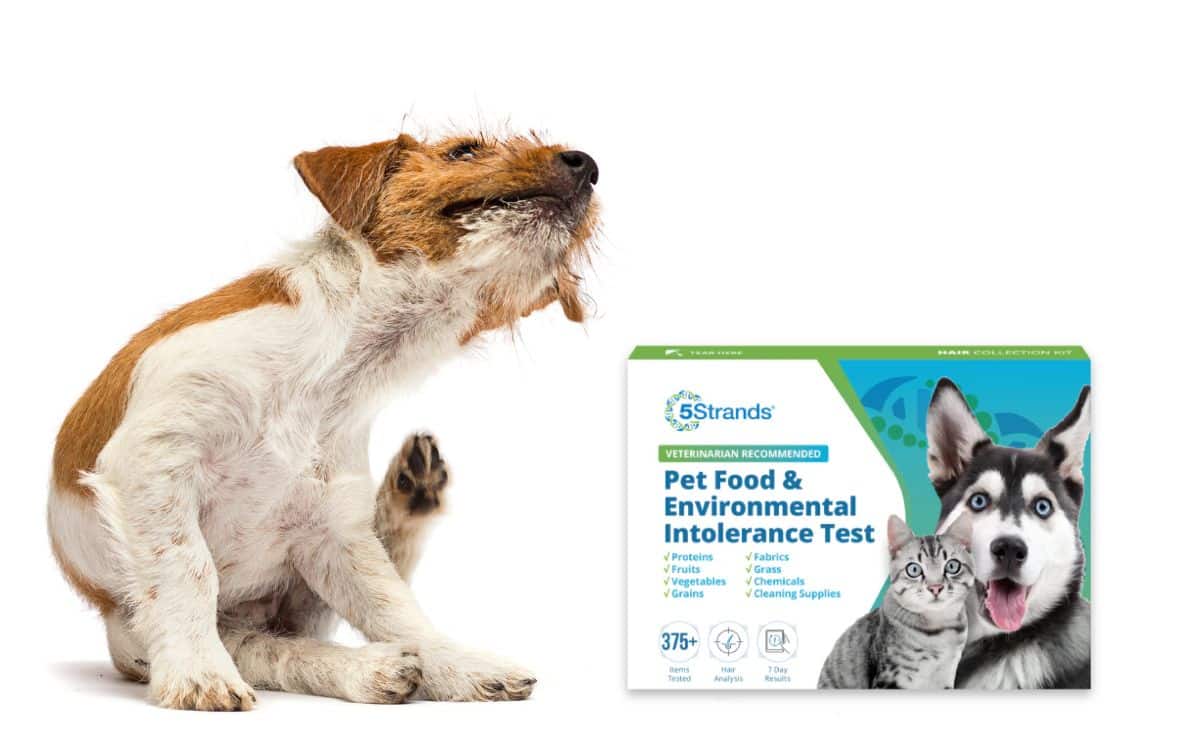Dog Poop Colors Decoded: A Crap-Tastic Guide to Canine Health
When you purchase through links on our site, we may earn a commission. Here’s how it works.
Here at Canine Journal, we consider it our solemn, stinky responsibility to inform you about what’s coming out of your pup. After all, your dog’s poop is basically a daily health report.
Table of Contents
Thus, we welcome you to our grossly enthusiastic investigation of dog poop colors, where we break down exactly what each shade means so you never have to panic over a mystery turd again.
So, grab some gloves (hopefully metaphorical), and let’s embark on a disgustingly enlightening journey through the world of dog poop colors—because knowledge is power, and in this case, it might also save your rug.
Dog Poop Colors: A Field Guide For The Deeply Unfortunate & Morbidly Curious
You never planned to become a poop detective, but here you are. Good for you. Knowing what’s normal and what’s not could save you unnecessary panic—or help you catch a serious problem before it spirals.
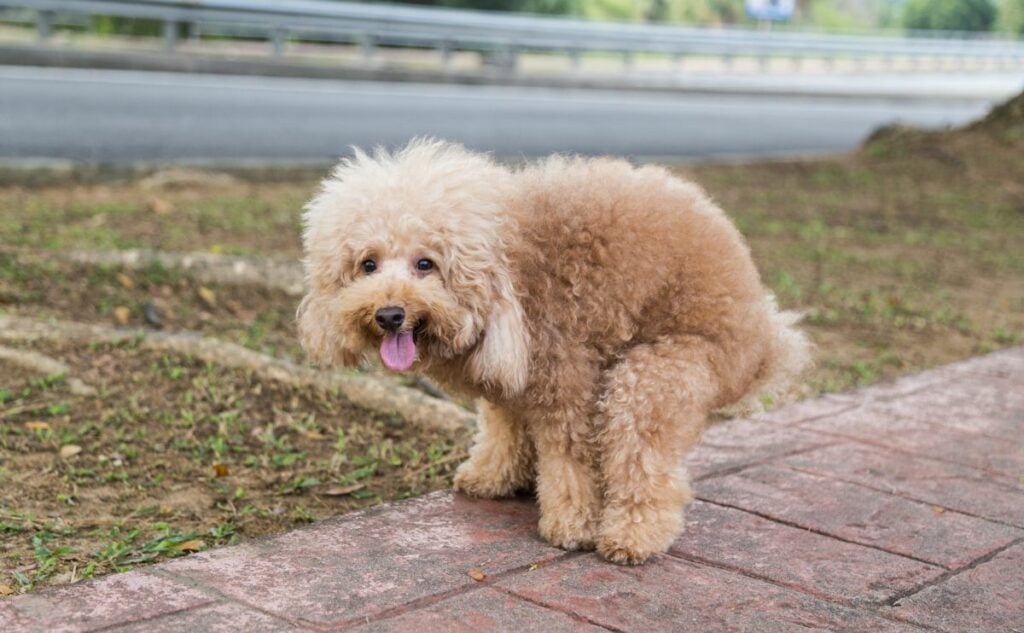
Most of the time, poop is just poop—a familiar shade of brown, firm but not too hard, and nothing to stress about. But when your pup starts producing a stoplight of red, yellow, or green, it’s time to pay attention. It could be something minor (like an overload of carrots turning things orange) or a serious warning sign (like internal bleeding making it jet black).
So before you brush off an unusual hue as a harmless quirk, let’s dive into the spectrum of stink and figure out precisely what your dog’s poop is trying to tell you.
The Normal Stuff: What Healthy Dog Poop Looks Like
Not all healthy dog poop looks the same. It varies by breed, diet, and even hydration levels, but there are some universal truths when it comes to a prime canine bowel movement.
In general, a dog’s poop should be:
- Firm, but not rock-hard: Holds its shape without being difficult to pass
- Medium to dark brown: The gold standard of normal dog digestion
- Moist, but not sticky: Shouldn’t leave a mess behind when picked up
- Well-formed and segmented: Think log-shaped, not a pile of mush or tiny pebbles
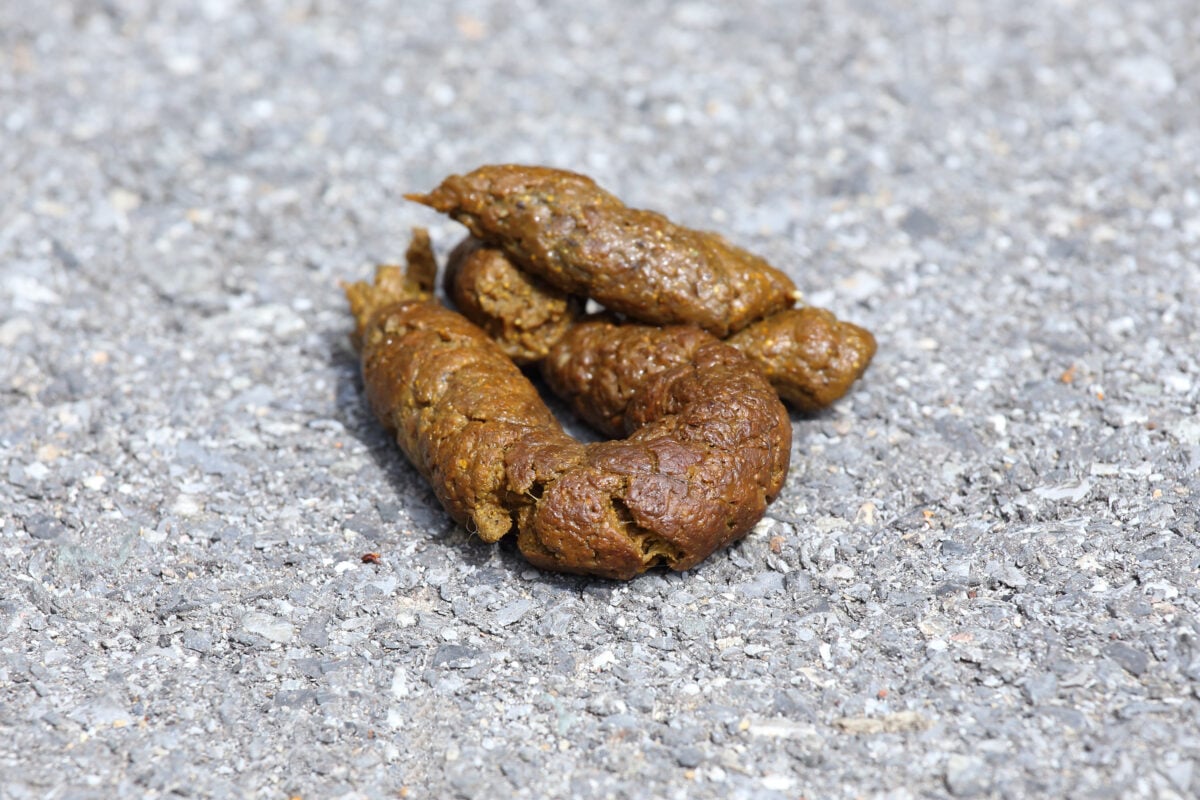
Knowing what’s normal for your dog is the key to catching potential health issues early. Pay attention to their usual poop color, consistency, and frequency so you can spot a problem before it turns into a real mess.
Did You Know? Dogs often face north or south when they poop. A study of nearly 2,000 bathroom breaks found they line up with the Earth’s magnetic field. Scientists still don’t know why, but it’s one of those weird dog facts you’ll never unsee.
Vet Or Chill? A Quick Decision Guide For Panicked Dog Parents
We get it. One glance at an unusual dog poop color, and you’re spiraling.
Before you rush to the vet, take a deep breath and use this quick guide to assess whether you need to panic or just monitor the situation. Later, we’ll get into the dirty details of what each color could mean, but for now, here’s your rapid-fire decision chart.
Vet ASAP: Serious Emergency Colors
These poop colors require immediate veterinary attention, as they can signal life-threatening conditions.
- Pink or purple (raspberry jam poop): Emergency! This could be hemorrhagic gastroenteritis, which can cause rapid dehydration, shock, and death.
- Black, tar-like poop: Possible internal bleeding in the stomach or intestines. If your dog’s poop looks like road asphalt, get them to a vet.
- Bright red poop with heavy bleeding: If your dog is passing large amounts of fresh blood, this could indicate a severe gastrointestinal injury or clotting disorder.
Vet Soon: Concerning But Not Immediate Emergencies
These cases don’t require a middle-of-the-night ER visit, but you should schedule a vet check-up soon if symptoms persist.
- Bright red streaks in poop: Often due to mild colitis or rectal irritation, but if it keeps happening, you’ll want a vet to rule out infections or more serious GI issues.
- Gray or greasy poop: May indicate exocrine pancreatic insufficiency, bile duct issues, or chronic pancreatitis. Watch for weight loss or an oily sheen on poop.
- Yellow or orange poop: Could mean liver or bile issues, rapid food transit, or a diet-related reaction. If it lasts more than a couple of days, get it checked.
Monitor Closely: Likely Dietary Or Mild Digestive Upset
These colors can often be explained by diet but should still be monitored in case they persist.
- Green poop: Probably okay if your dog has been munching on grass or eating green foods. But a vet visit is wise if it’s persistently green, slimy, or foul-smelling.
- Polka-potted poop (white specks): If the specks are wiggling, congratulations, your dog has worms—call your vet. If they’re static, it’s likely undigested food or calcium deposits.
- White, chalky poop: Too much calcium or bones but persistent white stools could signal other health problems.
Chill: Probably Nothing, But Keep An Eye On It
If your dog is acting normal, eating well, and has no other symptoms, these poop changes may resolve on their own.
- One-off weird poop color: If your dog ate a crayon or some other non-toxic “treat,” expect some technicolor poop but no actual harm.
- Mild diarrhea after a diet change: This happens with abrupt food transitions but should improve within 24 hours.
Dog Poop Color Chart
Check out our visual guide to dog poop colors.
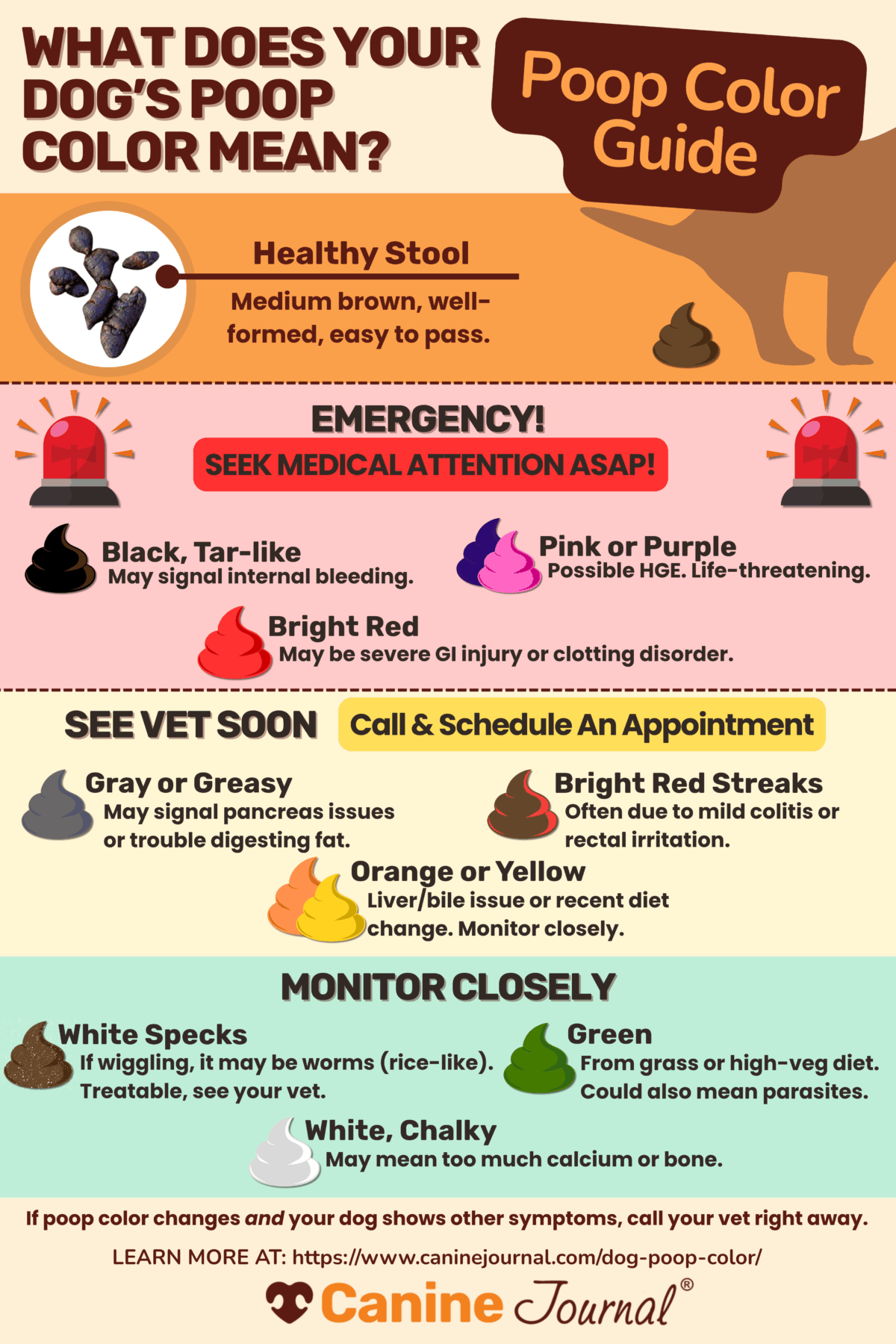
The Poop Rainbow: 9 Colors & What They Say About Your Dog’s Health
Here’s the deal: Dog poop comes in a glorious range of shades. However, normal dog poop is some shade of brown — the universal signal that all is well in the digestive kingdom.
When your pup starts producing something that looks more like a traffic light than a bowel movement, it’s worth a closer look. Because while most poop colors fall into the “nothing to worry about” category, some scream, “vet visit now.”
Below, we break down the most common colors and what they mean.
1. Pink Or Purple Dog Poop (Raspberry Jam Stool)
If your dog’s poop is pink, purple, or has a jelly-like consistency, it could be a sign of hemorrhagic gastroenteritis (HGE), also known as acute hemorrhagic diarrhea syndrome (AHDS). Often described as “raspberry jam” feces, this appearance is caused by a mixture of blood, mucus, and fluid.

Why It’s Dangerous
Dogs with HGE often have sudden bloody diarrhea and vomiting, and untreated cases can quickly lead to dehydration and shock. HGE is a medical emergency that can be fatal without immediate veterinary care.
Common Causes
- Bacterial infections
- Dietary indiscretion (eating non-food items)
- Immune system dysfunction
- Pancreatitis
- Toxin exposure
When It Might Be Less Serious
While true raspberry jam poop is always a medical emergency, some dietary and environmental factors may cause temporary pinkish or reddish discoloration that is less concerning:
- Eating beets or red food dye: Can mimic blood in stool but won’t cause mucus or diarrhea
- Raw or undercooked meat: May pass through the digestive system with pinkish streaks
- Severe food intolerance or allergies: Can trigger inflammatory diarrhea with blood-tinged mucus
- Sudden diet changes or spoiled food: May cause bacterial overgrowth, leading to bloody diarrhea
Quick Takeaway: Pink or purple, jelly-like stool = emergency vet visit. This is not a “wait and see” situation.
2. Black Dog Poop Or Very Dark Stools
If your dog’s poop is black, tarry, or sticky, it may indicate digested blood in the stool, which can signal internal bleeding in the stomach or upper gastrointestinal tract. Blood turns black as it travels through your pup’s digestive system, resulting in a melena, or a black stool.
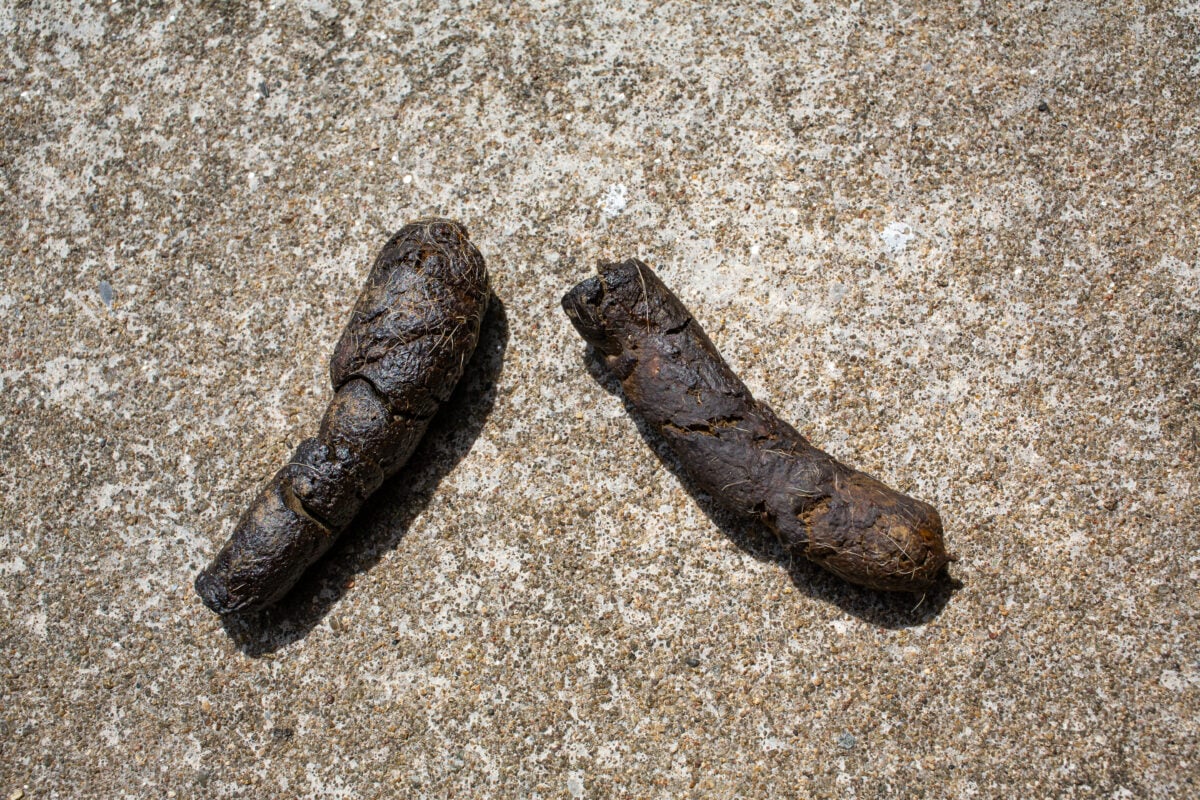
Why It’s Dangerous
Melena often points to serious conditions like ulcers, bleeding tumors, or GI perforations. Dogs with black stools may also show other signs of blood loss, such as weakness or pale gums. You can also recognize melena for its sticky texture and pungent odor, a byproduct of blood being broken down and digested.
If your dog shows other signs of blood loss, you should immediately seek medical support.
Medical Causes Of Black Poop
- Cancer in the esophagus, stomach, or pancreas
- Gastrointestinal perforation (tear in the GI tract lining)
- Ingesting blood (e.g., licking a wound)
- Intestinal parasites (i.e., hookworms)
- Liver or pancreatic disease
- Metabolic diseases (e.g., Addison’s disease)
- Non-steroidal anti-inflammatory drugs (NSAIDs), e.g., aspirin, Deramaxx, Metacam, Previcox, and Rimadyl
- Poison ingestion (rat poison, anticoagulants)
- Severe inflammation (esophagitis, gastritis)
- Stomach ulcers
- Tumors
When It Might Be Harmless
Sometimes food, medications, or supplements can darken stools without a medical crisis:
- Activated charcoal
- Bismuth subsalicylate (e.g., Pepto-Bismol)
- Blueberries or other very dark foods
- Iron supplements
- Large amounts of liver or red meat (e.g., raw diet)
Quick Takeaway: While some causes are benign, black stools can also signal potentially life-threatening health issues, so it’s always best to confirm with your dog’s vet. Black, tar-like poop = digested blood → emergency vet care.
3. Bright Red Dog Poop Or Blood-Streaked Stools
Bright red stool or red streaks in dog poop indicate bleeding in the lower gastrointestinal (GI) tract, often originating from the colon or rectum. Unlike black poop, where the blood has been digested, red poop signals the blood is fresh and hasn’t passed through the upper digestive system.
Why It’s Concerning
Fresh blood in stool can range from minor irritation to serious disease. Occasional small streaks may resolve, but persistent or heavy bleeding requires a vet visit.
Common Medical Causes
- Anal gland infections
- Bacterial colitis
- Blood clotting disorders
- Constipation (straining can cause small rectal tears)
- Dietary indiscretion (eating sharp or rough objects that can cause tears in the lower intestines or rectum)
- HGE
- Intestinal parasites (i.e., whipworms)
- Inflammatory Bowel Disease (IBD)
- Poison ingestion
- Rectal cancer or tumors
- Recent surgery or trauma
What Does Parvo Poop Look Like?
Parvovirus (parvo) is a highly contagious and potentially deadly virus that affects puppies and unvaccinated dogs. One of the most recognizable symptoms is foul-smelling, bloody diarrhea. Parvo poop is typically:
- Dark brown to black or bright red if actively bleeding
- Foul-smelling (worse than normal dog poop—think rotting meat level bad)
- Liquid or extremely soft
If you suspect parvo, contact your vet immediately.
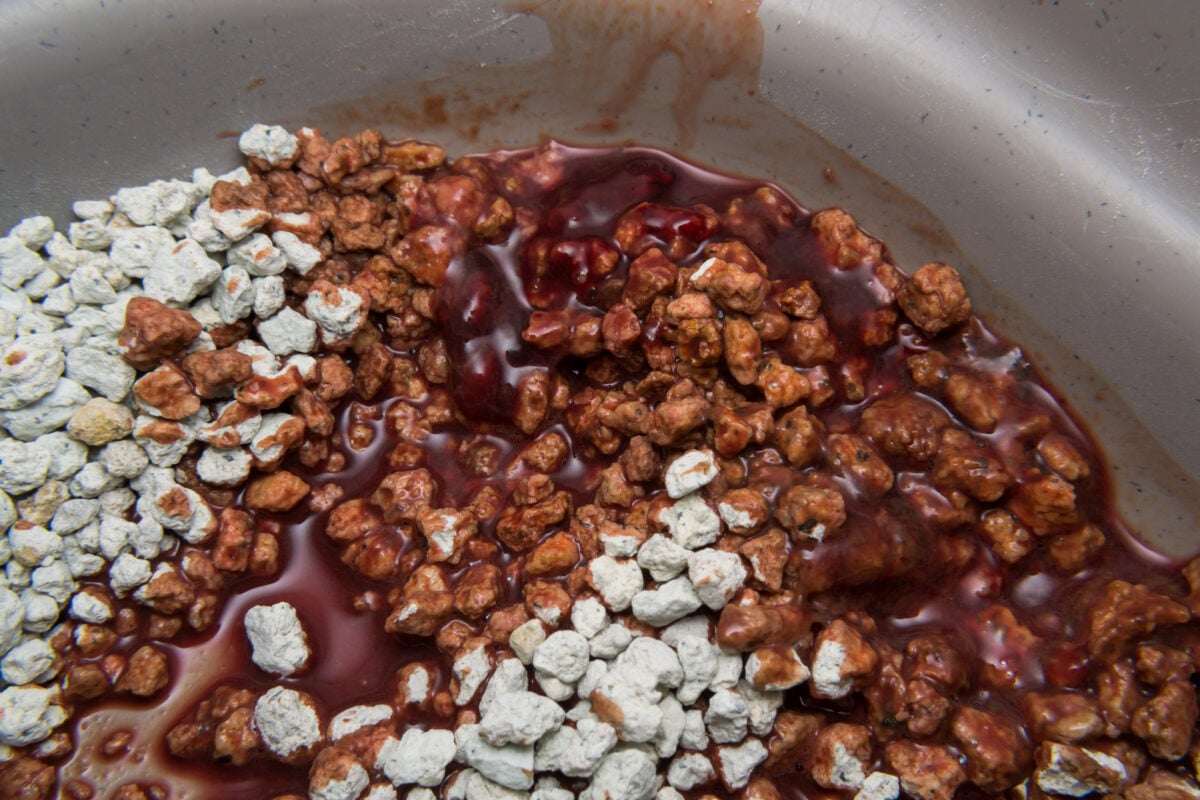
4. Chalky Gray Dog Poop Or Greasy-Gray Stools
Gray dog poop usually falls into two categories: chalky gray or greasy gray. Understanding which one your dog has can point toward very different health issues.
Chalky Gray Poop
- Dry, firm, clay-like texture
- Often linked to liver disease, gallbladder dysfunction, or bile duct obstruction
- May come with other liver symptoms like jaundice (yellow eyes/skin), weight loss, or lethargy
Greasy Gray Poop
- Oily, shiny surface with a foul odor
- Often large in volume and hard to pick up
- Signals fat malabsorption, usually caused by exocrine pancreatic insufficiency (EPI) or chronic pancreatitis
- Dogs may also lose weight, feel constantly hungry, or have bloating and chronic diarrhea
Potential Causes Of Gray Or Greasy Poop
- Chronic pancreatitis
- Bile duct obstruction
- Exocrine pancreatic insufficiency (EPI)
- Liver disease
- High-fat diets or sudden diet changes
- Poor-quality dog food
If your dog is also losing weight or showing changes in energy levels, a vet may perform tests to check pancreatic enzyme levels, liver function, or bile duct health. Pancreatic and liver-related conditions can be managed with dietary adjustments, enzyme supplements, or medications, but early diagnosis is crucial.
When Poop Looks Like A Cow Pie
Soft, greasy, foul-smelling stool that spreads out like a cow patty is called steatorrhea — essentially, poop with an oil slick on top. This means your dog’s digestive system is having trouble breaking down and absorbing fats.
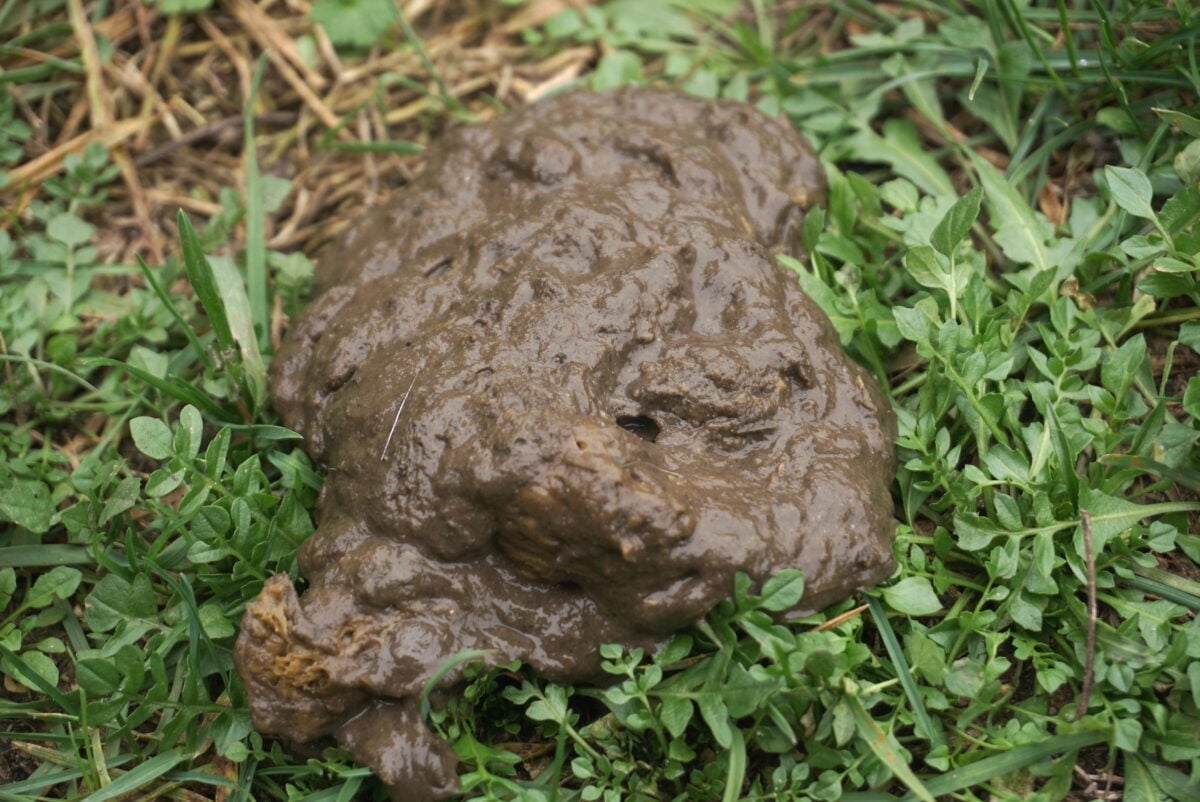
5. Orange Dog Poop
If your dog’s poop is orange, it may indicate that food is moving too quickly through the digestive tract, preventing bile from fully breaking it down. Bile is what give poop its normal brown color. When bile doesn’t have time to fully process, stool may appear orange instead of brown.
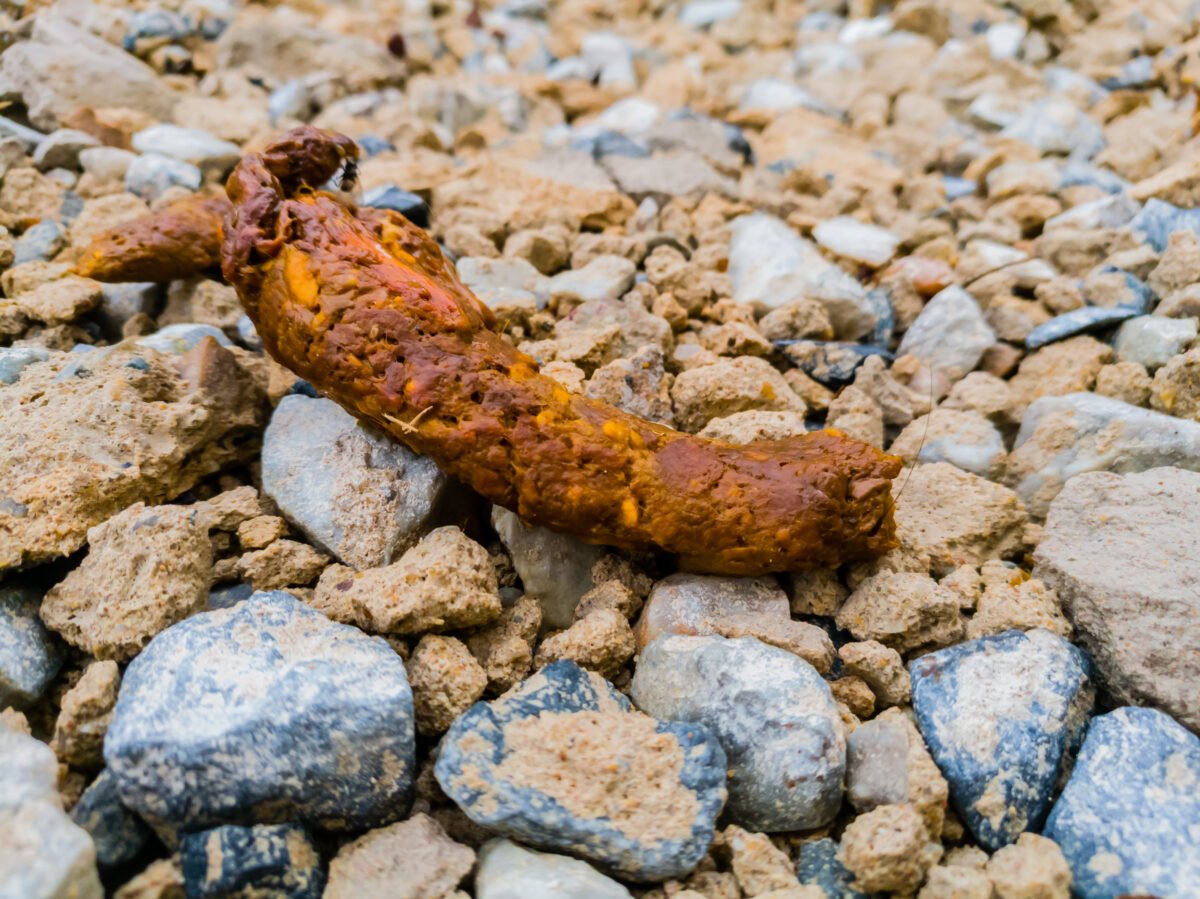
When It’s Harmless
One-off orange poop often comes from pigmented foods like carrots, pumpkin, or sweet potatoes. If your dog is otherwise acting normal, it’s probably nothing to worry about.
When It’s A Warning Sign
Persistent orange stools — especially if greasy, watery, or paired with vomiting and lethargy — may signal bile or liver problems that require a vet check.
Potential Causes Of Orange Poop
- Bacterial infections (e.g., Salmonella, Clostridium, E. coli)
- Biliary diseases
- Consumption of orange-pigmented foods
- Gastrointestinal inflammation or irritation
- Fatty or greasy meals (interfere with bile processing)
- Medications (e.g., antacids, certain antibiotics, deworming medications)
- Rapid food transit (bile hasn’t fully processed food)
- Sudden dietary changes
Quick Takeaway: Orange poop after carrots = fine. Orange poop that’s greasy or persistent = possible liver or bile issue → call your vet.
6. Yellow Dog Poop
If your dog’s poop is yellow, the cause can range from harmless diet quirks to more serious digestive issues. Bile normally turns stool from yellow to brown as it moves through the intestines. When that process is disrupted — either by food, medication, or illness — poop may stay yellow instead.
Diet-Related Causes
- Fatty or rich foods (high-fat diets can upset bile balance)
- Food allergies or intolerances (chicken, beef, grains, etc.)
- Highly processed foods or artificial dyes
- Sudden diet changes
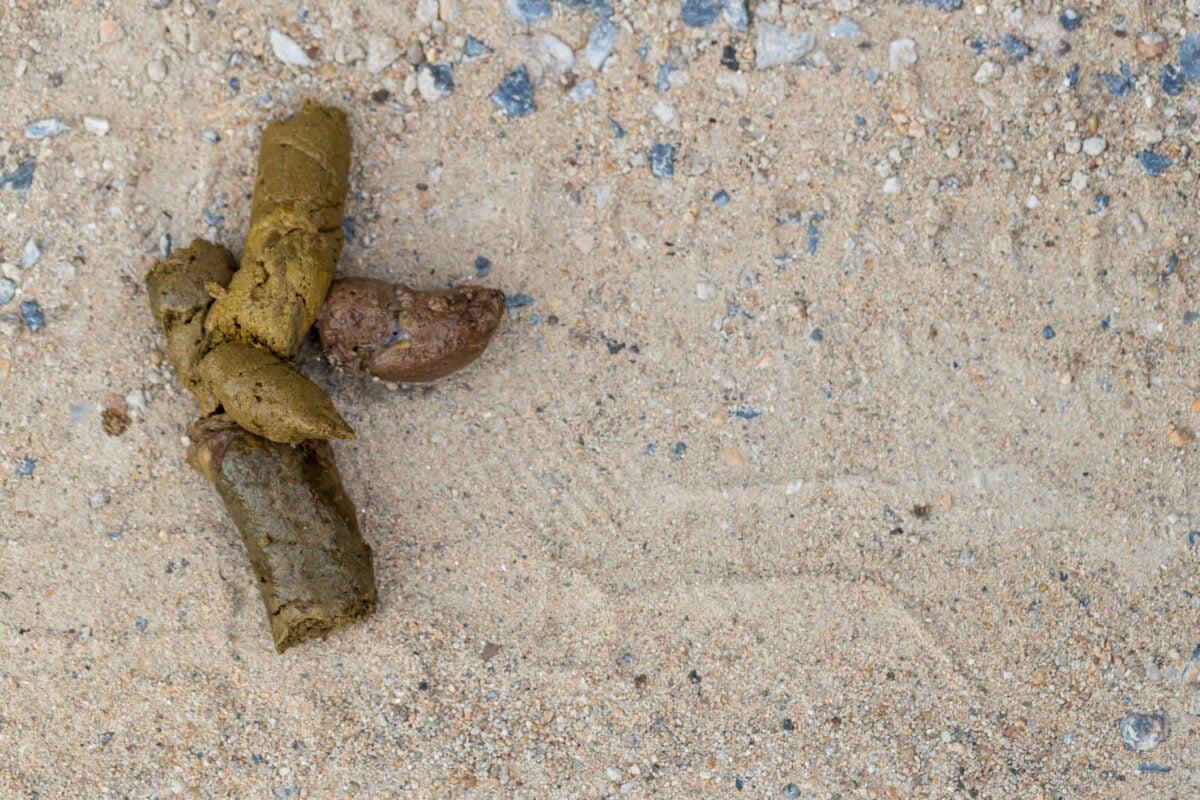
Did You Know? Sometimes poop comes out looking two-toned. This happens when digested and undigested food move through the intestines at different speeds. Common causes include diet transitions, slow digestion, or gut motility issues.
When Yellow Signals Trouble
Normally, bile turns feces brown as it moves through the digestive system. But if something interferes with bile absorption, stool may stay yellow. Persistent yellow poop — especially if greasy, watery, or paired with vomiting and lethargy — needs a vet check.
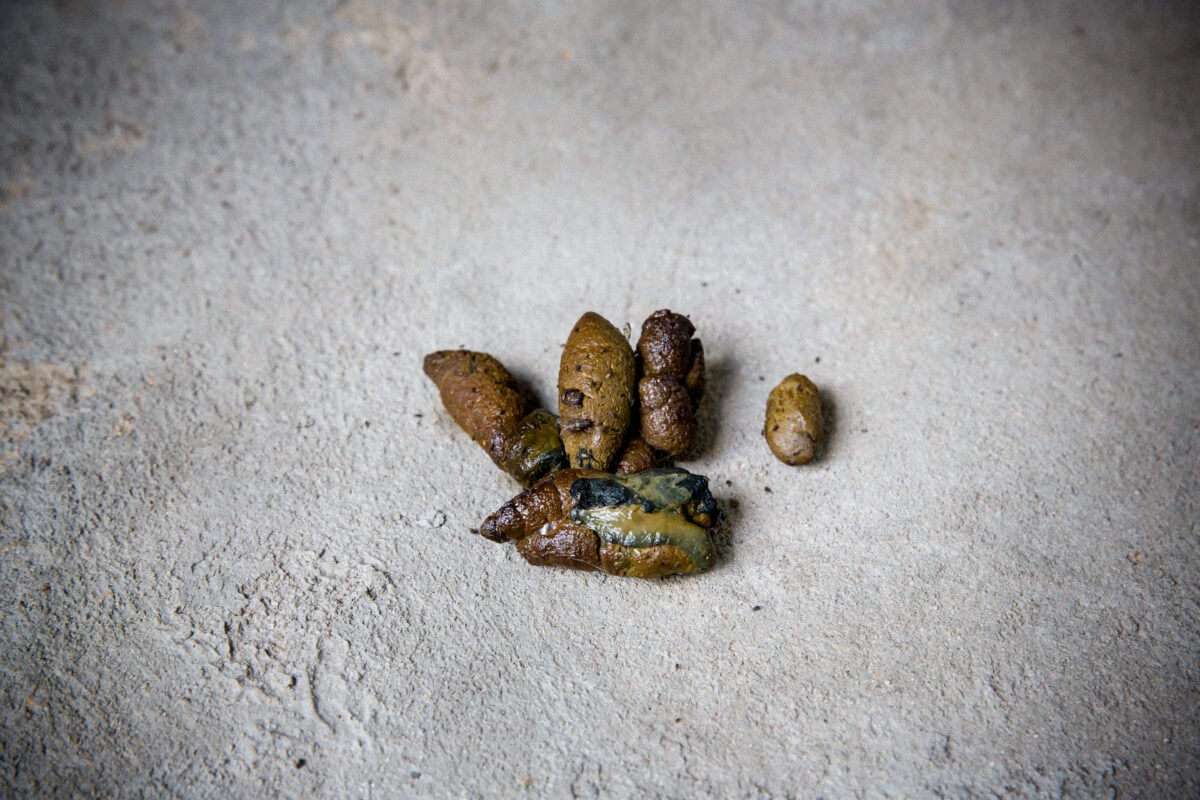
Medical Causes Of Yellow Poop
- Antibiotics (disrupt gut bacteria)
- Bacterial infections
- Biliary diseases (conditions affecting the gallbladder and surrounding areas)
- Dewormers (temporary side effect as parasites pass)
- Liver or gallbladder medications
- Giardia (a parasitic infection)
- Food allergies
- Irritable bowel syndrome (IBS) or IBD
- Malnutrition
A vet may recommend bloodwork, stool analysis, or bile acid tests to check for liver, pancreas, or intestinal disorders. A dietary trial or allergy testing may help pinpoint the cause if food intolerance is suspected.
What Does Giardia Poop Look Like?
Giardia poop is the stuff of nightmares — slimy, sometimes frothy or greasy, and unusually foul-smelling. It may be pale yellow, green, or brown, and it often shows up intermittently (normal one day, puddle the next).
Chronic Giardia infections can cause weight loss, bloating, and a dull coat. It spreads through contaminated water, soil, or poop and requires medication to clear. It won’t resolve on its own.
7. Green Dog Poop
Green poop can be as simple as too much grass — or it can be a sign of something more serious. The key is whether it’s a one-off event or a recurring problem paired with other symptoms.
Diet-Related Causes
- Eating too much grass (the most common benign reason)
- Green food dyes in kibble or treats
- High-vegetable diets (spinach, kale, broccoli, etc.)
- Supplements like chlorophyll or spirulina
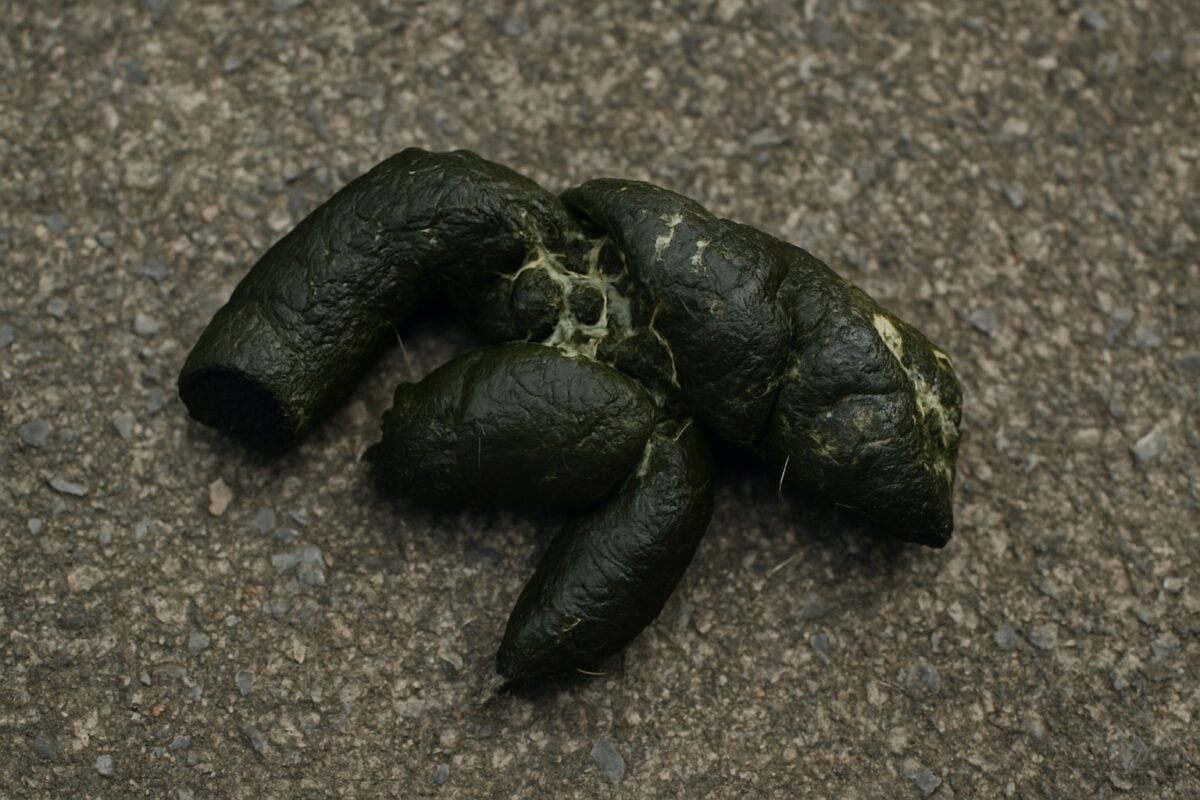
When Green Signals Trouble
Sometimes persistent green stool points to gastrointestinal upset or other underlying conditions. Rapid food transit through the intestines leaves bile unprocessed, which can tint stool green.
Watch for warning signs like:
- Vomiting
- Diarrhea
- Mucus
- Foul odor
These symptoms may point to bacterial overgrowth, parasites, or inflammatory conditions.
Potential Medical Causes
- Bacterial infections
- Food allergies
- Gallbladder or bile production issues
- Giardia
- Inflammatory bowel disease (IBD)
- Toxin exposure
- Liver disease
- Stress-related digestive upset
If your dog’s poop remains green despite no recent dietary changes—or if it’s paired with symptoms like diarrhea, vomiting, or lethargy—it may be time to look beyond their food bowl and consider potential health concerns. While mild digestive upset may resolve on its own, persistent green stool or additional symptoms warrant a vet visit to rule out infections, inflammation, or organ-related issues.
Quick Takeaway: Green + slimy, stinky, or persistent = time for a vet. Grass-only green = usually safe.
8. White Dog Poop (Chalky, Dry, or Hard Stools)
If your dog’s poop is chalky white, dry, or crumbly, the most common culprit is excess calcium in the diet. This often occurs in dogs fed a raw diet with too many bones or those consuming large amounts of calcium supplements. Unlike normal brown logs, white poop tends to be brittle and turns to dust when crushed.
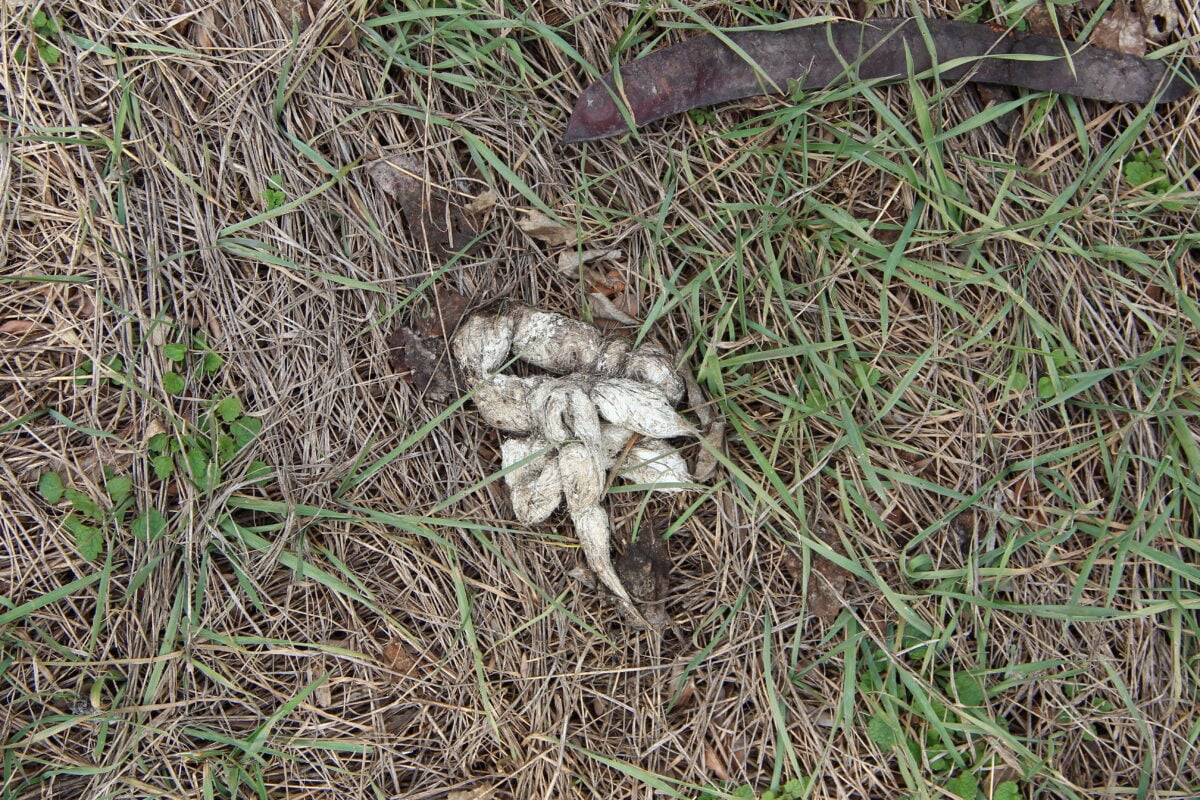
Potential Causes Of White Poop
- Calcium supplements or fortified treats
- Excessive bone consumption
- High-calcium diets (including certain homemade or prescription diets)
- Poor digestion of minerals in low-quality kibble
Why It Matters
While a single white stool may not be a cause for concern, consistently chalky stools can lead to constipation or even bowel impaction. If your dog strains, seems uncomfortable, or repeatedly passes white stools despite diet adjustments, it’s time to call your vet.
9. White Specks In Dog Poop
If you notice your dog expelling polka-dotted poop, the first step is to determine whether the white specks are moving or static. Moving specks are almost always parasites, while non-moving specks could be undigested food, medication residue, or something your dog ate.
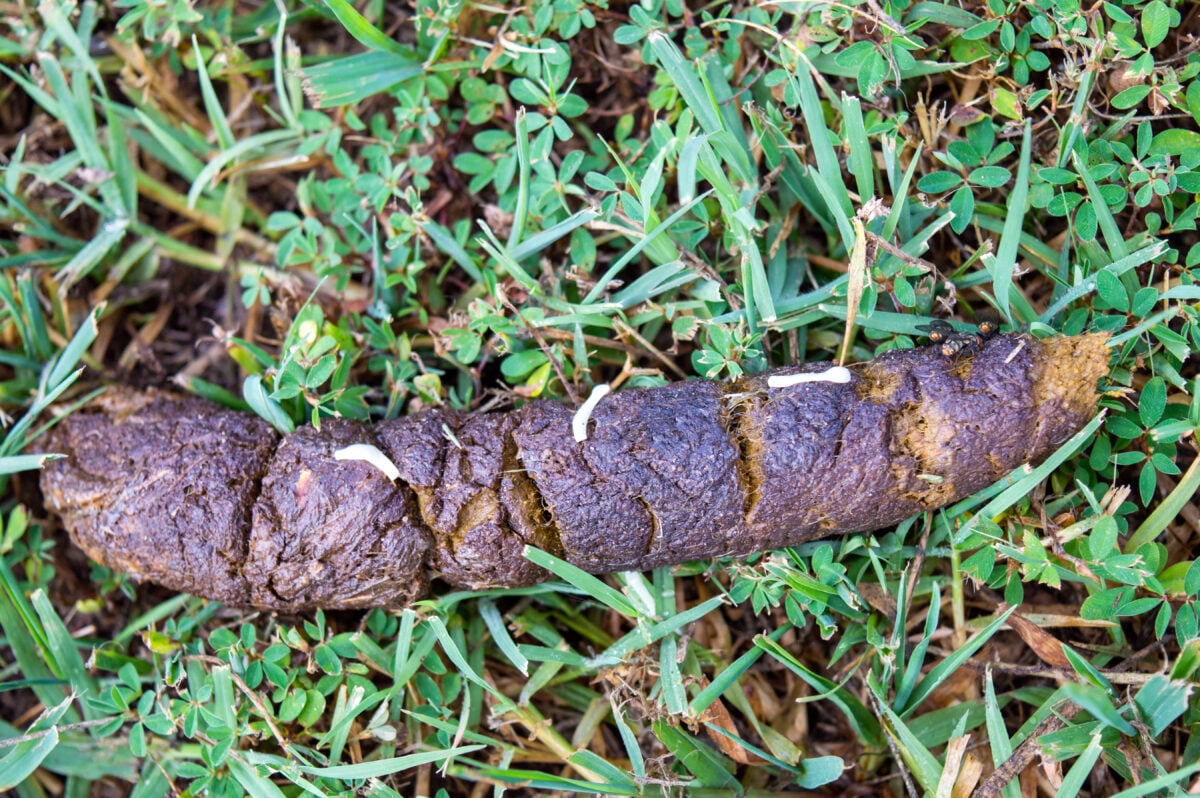
When It’s Parasites
Tapeworms and roundworms are the most common culprits:
- Tapeworms segments look like tiny grains of rice
- Roundworms eggs or larvae appear as small white flecks throughout the stool
If parasites are to blame, your vet will prescribe deworming medication.
When It’s Not Parasites
If the specks aren’t moving, they’re often just leftovers from food or supplements:
- Small bone fragments (common in raw diets)
- Calcium deposits from high-mineral foods or treats
- Undigested seeds, grains, or fillers in kibble
- Medication residue or expelled parasites from recent deworming
- Non-food items (like bits of paper or plastic)
Quick Takeaway: Static specks = usually food or minerals → monitor, but bring a stool sample if it continues. Moving specks = worms → vet visit.
Our Personal Experience With Colorful Dog Poop
My Chihuahua, Cookie, was prone to constipation. She was also a very picky eater and a huge food thief.
She experienced blood in her stool on a few occasions. She would sometimes have a loose movement or diarrhea with bits of bright red blood mixed in. It had a powerful odor as well.
The vet examined her regularly, and I took a stool sample for testing. The sample helped determine if there was any underlying medical issue.
Her veterinarian believed the blood in her stool was due to digestive upset, picky eating habits, or possible food allergies. To solve the problem, I worked with her vet to keep her on a diet formulated for her sensitive stomach.
I stopped giving her human foods as treats, sticking only to dog foods and treats for sensitive tummies. She liked boiled chicken, so I would mix bits of that with plain, cooked white rice and some pumpkin puree. This helped regulate her stool and keep her belly full without upset.
–Danielle DeGroot, Dog Owner & Canine Journal Researcher & Writer
More Poop Horror Stories: Tales Of Turds And Terror
While some dogs deal with ongoing digestive issues, others turn bathroom breaks into all-out chaos. From mysterious colors to indoor disasters, the Canine Journal Team has seen it all.
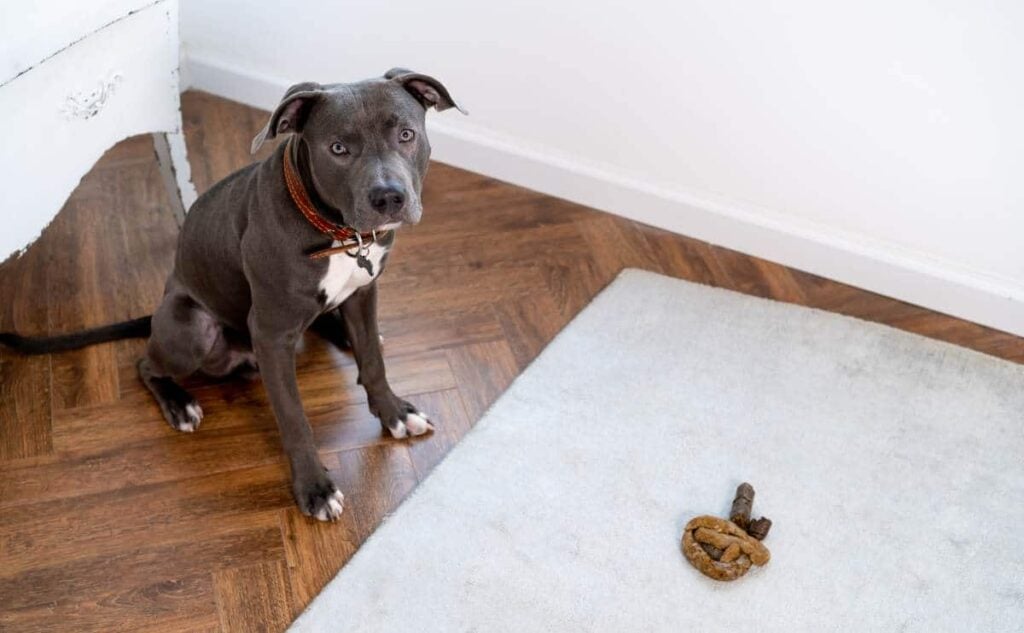
If there’s one lesson we’ve learned, it’s this: Never underestimate a dog’s ability to turn household objects into digestive nightmares. And for the love of sanity, keep your crayons out of reach unless you want to turn your backyard into an abstract art exhibit.
- The Week-Long Rainbow: “My husband’s dog growing up literally ate a bucket of crayons and produced technicolor turds for a week. Every yard pickup felt like cleaning up after a unicorn.” – Kimberly Alt, Writer & Pet Insurance Expert
- The Crayola Catastrophe: “I thought my dog was dying when I saw neon blue poop in the yard. Turns out he ate my kid’s crayons.” – Sally Jones, Writer
- The Case of the Missing Tennis Ball: “I nearly panicked when I saw my dog pooping bright orange, convinced something was seriously wrong. Then, a few hours later, I noticed his favorite orange tennis ball was missing. I’m no detective, but the evidence was … conclusive.” – Danielle DeGroot, Writer
- The Unholy Scoot Marks: “I was watching my parents’ toy poodle when he decided to turn their carpet into a minefield of skid marks. I left the room for a moment, and when I returned, he had scooted his way across nearly every inch of the living room carpet, leaving a trail of poop streaks. I spent the next hour scrubbing out poop stains and questioning my life choices.” – Tara Maurer, Writer
Bonus Horror Story: The Crime Scene Cleanup
While poop stories tend to steal the spotlight, sometimes, a dog’s stomach disaster takes things to a whole new level. Enter: projectile vomiting.
This one isn’t about poop, but it’s just as horrifying — maybe worse. My parents’ dog, Joey, got into my dad’s deer carcass.
How did we find out? He projectile vomited what seemed like gallons of blood at the bottom of our staircase. It looked like a full-blown crime scene.
For a split second, I thought we’d either stumbled upon a murder or that Joey had somehow lost an internal organ. It turns out that deer guts and a dog’s stomach don’t mix.
– Tara Maurer, Dog Mom & Canine Journal Researcher & Writer
Think your dog’s poop disaster tops these? We dare you to try. Drop your most horrifying, hilarious, or downright unbelievable dog poop story in the comments—because if there’s one thing we’ve learned, it’s that there’s always a worse one out there.
The Four C’s Of Dog Poop Consistency
When it comes to evaluating your dog’s poop, color isn’t the only thing that matters. Enter the Four C’s of Dog Poop Consistency, a simple way to assess whether your dog’s digestive system is in top shape or needs a little help.
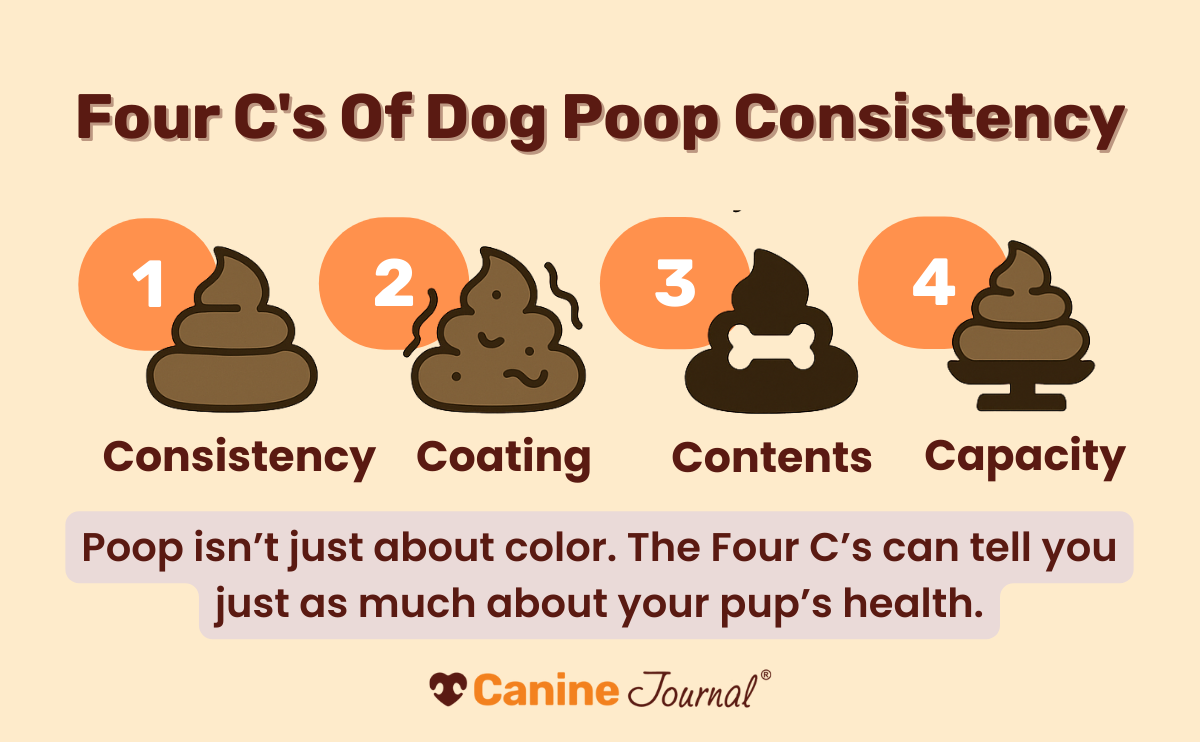
We’ll break down each category with examples so you can recognize when your dog’s poop is normal and when it might signal a problem.
1. Consistency
The ideal dog poop should be firm but not rock-hard—think Play-Doh or a slightly overripe banana. Stools that are too soft, watery, or crumbly may indicate digestive upset, dehydration, or an underlying health issue.
- Firm and formed? Healthy
- Soft but holds shape? Mild digestive upset, dietary changes, or food sensitivities
- Loose, cow-patty-like stool? Possible malabsorption issues like EPI
- Watery diarrhea? Time to call the vet—this could signal infection, parasites, or severe GI distress
2. Coating
Healthy dog poop should be coating-free—clean, with no mucus or residue left behind. If your dog’s stool looks slimy or has a jelly-like coating, this often means the colon is inflamed and producing excess mucus.
- Mucus-covered poop? Colitis, food sensitivities, or intestinal infections
- Blood-streaked coating? Lower GI tract irritation, anal gland issues, or rectal injuries
If you’re noticing frequent mucus in poop, especially with diarrhea or discomfort, a vet visit may be needed.
3. Contents
Sometimes, you need to take a closer look. What’s inside your dog’s poop can reveal hidden health issues.
- Undigested food? Your dog may not be properly breaking down certain ingredients
- White specks (moving)? Tapeworms—time for deworming
- Excessive hair? Possible overgrooming, stress, or digestive slowdown
- Foreign objects? Grass, plastic, socks. If your dog is eating weird things, it could indicate boredom, pica, or a potential blockage
If you see something unusual in your dog’s stool, monitor them closely and contact your vet if symptoms persist.
4. Capacity (Volume And Frequency)
A dog’s poop volume and frequency should generally match their size, diet, and eating habits. Changes in how often or how much they poop can tell you if their digestion is running smoothly or going off track.
- Sudden increase in poop volume? Malabsorption issues, like EPI, can cause excessive stool production
- Pooping too frequently? High-fiber diet, stress, or mild digestive upset
- Pooping too little? Constipation, dehydration, or an obstructed bowel
A dog should generally poop once or twice a day, though some may go more often depending on their diet. Extreme changes in frequency or volume, especially with other symptoms, should be checked by a vet.
Help Your Dog Poop Like a Pro
If you’re monitoring your dog’s poop using the Four C’s (Consistency, Coating, Contents, and Capacity), you’ll be one step ahead in keeping their digestive health in check. Changes happen, but persistent abnormalities may signal something more serious.
What Your Dog Eats Matters
The best way to prevent digestive tract problems is to know exactly what your dog is eating. Here’s how to help promote healthy dog poop:
- Feed a consistent diet of the highest quality dog food you can.
- Limit human food. Make sure kids and other family members know what not to feed your dog.
- Prevent your pup from rummaging in trash and compost piles.
- Know what’s growing in your yard. Mushrooms and many types of plants (including some berries) can make your dog super sick.
- Keep medicines, household trash, cleaning products, lawn and garden products, and pest-control chemicals out of reach because they all pose serious threats to your dog’s health if ingested.
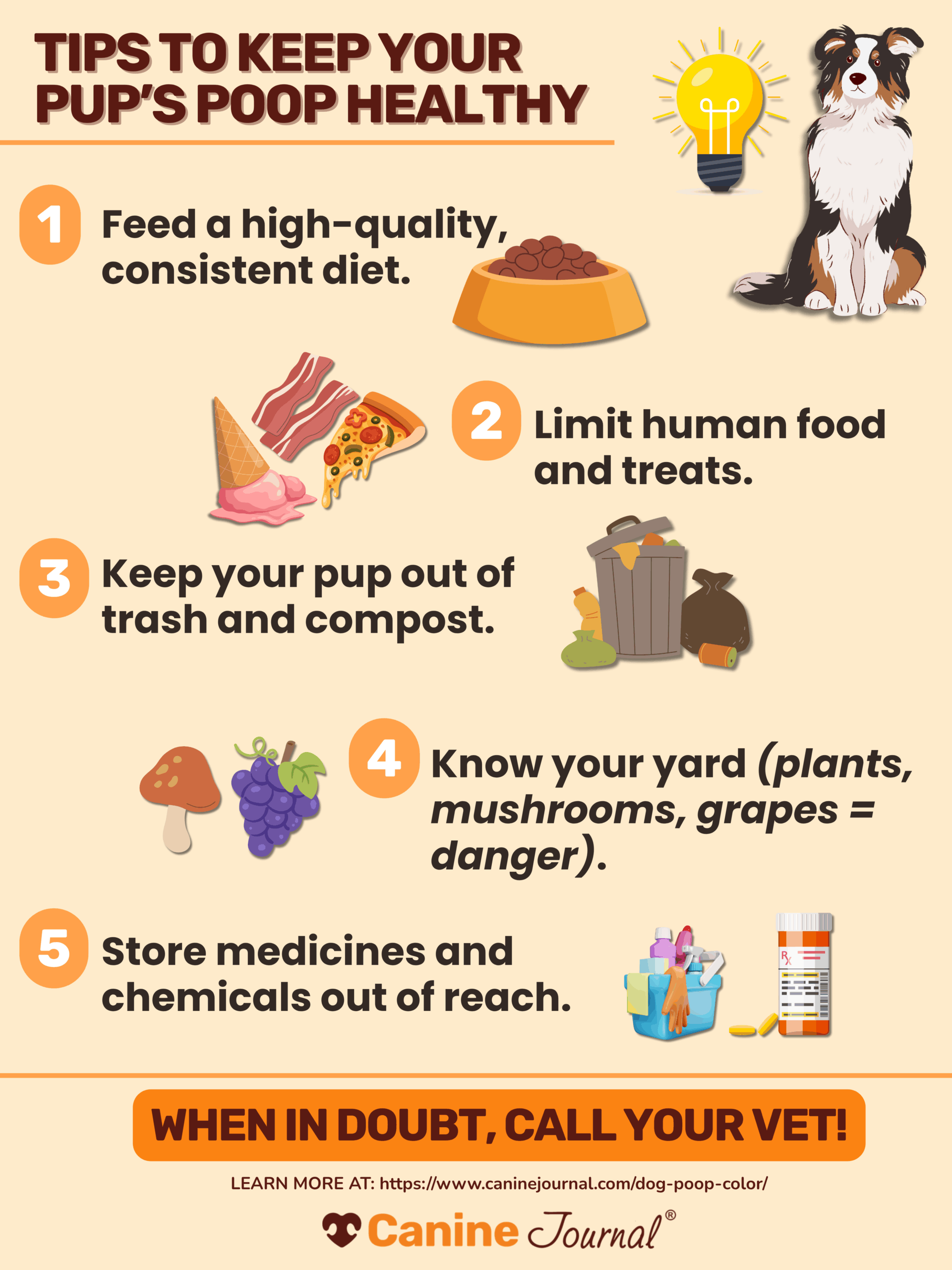
How To Save Money At The Vet
Unexpected vet bills can be a crappy situation. Fortunately, there’s a way for you to manage your money to cover unplanned bills when they arise.
Should your pup become sick or injured, pet insurance can help cover the cost of eligible conditions. If you’re considering pet insurance, you can read up on the companies we rank in our pet insurance reviews. We share our top recommendations for the best pet insurance companies and review their key features, including plan and cost options, coverage, and exclusions.
And if this is an entirely new topic for you, it’s a great idea to learn all about how pet insurance works. The video below helps explain how dog insurance works and how it can save you money.
Frequently Asked Questions
Welcome to the dog poo FAQ, where you’ll get answers you never wanted but definitely need. Don’t see yours? Ask us in the comments!
Why Does My Dog’s Poop Change Color Daily?
Daily shifts often come from diet — think carrots one day, spinach the next. However, if your dog’s poop is consistently changing between normal and red, black, or yellow, it may signal irregular digestion, infections, or malabsorption.
Keep a poop log (yes, really) and call your veterinarian if the issue persists.
Why Does My Dog’s Poop Smell So Bad?
Dog poop never smells great, but if it suddenly smells extra horrific, something may be off. Possible reasons include:
- Dietary changes: New food, table scraps, or high-fat diets can create more pungent odors
- Malabsorption issues: If food isn’t digesting properly, poop can smell sulfuric or rotten (think pancreas problems or bacterial imbalances)
- Parasites or infections: Giardia, C. diff, and other gut bugs can create stinky, greasy, or slimy stool
- Anal gland problems: Sometimes poop smells worse because your dog’s anal glands are irritated or infected
If your dog’s poop smells noticeably worse than usual for more than a few days, check with your vet.
Why Does My Dog’s Poop Smell Metallic?
A metallic or iron-like odor can point to digested blood in the stool. This may happen with ulcers, internal bleeding, or even certain foods high in iron (like organ meat). If it persists, call your veterinarian.
Why Is My Dog’s Poop Slimy?
Slimy, jelly-like poop usually means excess mucus. This can signal colitis, gut irritation, or the presence of parasites like Giardia.
Why Is My Dog Pooping So Much?
If your dog is pooping more than usual, diet, stress, or illness could be to blame.
A high-fiber diet increases stool production, while food sensitivities can trigger more frequent poops as the body tries to eliminate irritating ingredients. A sudden diet change may also temporarily speed up digestion.
Stress and excitement often cause “nervous poops.” Dogs may poop more when anxious, overstimulated, or adjusting to a new routine, like during vet visits, car rides, or meeting new people. Once they relax, their digestion typically returns to normal.
Frequent pooping can also signal gastrointestinal infections, parasites, or digestive disorders, especially if stools are loose, mucus-covered, or foul-smelling.
If your dog’s poop is firm and their behavior is normal, monitor for changes. But if diarrhea, blood, or persistent issues develop, it’s time to call the vet.
Why Does My Dog Eat Poop?
Why does your beloved pet eat literal turds? The short answer? Because they’re gross.
The long answer? Some dogs eat poop out of boredom. Others do it for attention. Some cases stem from nutritional deficiencies, an attempt to repopulate gut bacteria, or pica. Stress or trauma could also be a component.
But let’s be honest — some dogs are disgusting little goblins who think poop is a delicacy. Talk to your vet to rule out medical causes if it becomes an obsession.
Why Is My Dog Scooting on Their Bum?
Is your pup spreading their poopy butt all over your carpet? Scooting can indicate issues such as anal gland problems, parasites, or skin irritation. Schedule an examination with your dog.
Healthy Food Means Healthier Poop
Monitoring your dog’s doody is one part of the process, but it all starts with what your dog eats. The higher the quality of food in their bowl, the healthier your dog’s poop and overall health will be.
Consider your pup’s breed, size, age, and specific medical concerns when selecting food. Many dogs appreciate the flavors of fresh and human-grade dog food. Not only will these provide top-notch nutrition, they will help make your dog’s poo less stinky, which is always a welcome benefit.
Did your dog produce an interesting poop color? Let us know in the comments!
